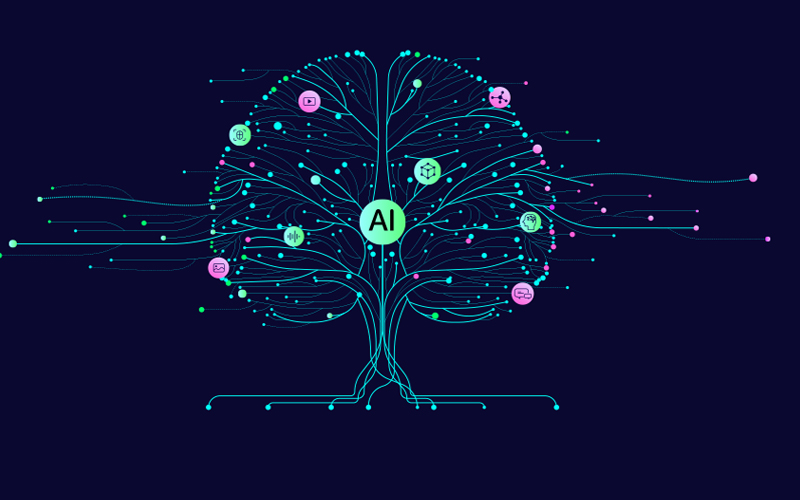Banks have recognised the need to improve efficiency for a better customer experience. Now, with the rise of new technologies, especially AI tools like virtual agents, these efforts can be scaled by leaps and bounds. Real-world examples of AI agents in banking demonstrate that it's possible to provide customers with faster, more personalised service while also reducing costs.
This article explores the role of agentic AI in banking and how banks can improve both customer satisfaction and their financial results at the same time using AI agents.
Smarter customer support
AI-powered chatbots and virtual assistants now offer 24/7 help, instantly handling common tasks like balance checks, transaction history, and account updates, reducing wait times and improving convenience.
Human-like conversations
Advanced, context-aware chatbots simulate natural conversations, allowing for smoother and more intuitive interactions that feel personal and engaging.
Personalised banking
AI engines analyse spending habits, account activity, and demographics to suggest relevant products like tailored credit card offers or savings plans, making customers feel understood.
Stronger security
Banks use AI to detect fraud across millions of transactions, offering customers greater safety and trust in their banking experience.
Faster onboarding with AI-KYC
AI speeds up Know Your Customer (KYC) checks by verifying identity, scanning documents, and spotting risks in real time, making account setup quicker and more seamless.
Improved compliance and risk detection
Machine learning and NLP tools flag suspicious behaviour and extract key data from documents (e.g., passports and utility bills), reducing manual errors and ensuring better compliance. The use of agentic AI in banking delivers a smoother, more secure, and customer-friendly experience that builds trust, loyalty, and long-term engagement.
Who can benefit from AI agents?
Banks and financial institutions across multiple areas stand to benefit significantly from AI agents, particularly agentic AI, which automates complex workflows with intelligent, context-aware decision-making. Here's who can benefit and how:
- Retail and corporate banking use AI for tailored financial advice, automated workflows, and dynamic credit risk profiling.
- Wealth management leverages AI for custom investment plans and real-time forecasting.
- Insurance providers streamline claims and policy management with AI.
- Compliance teams automate KYC, AML, and fraud detection, improving accuracy and reducing manual work.
- Customer support benefits from AI-powered chatbots for instant assistance.
- • Private equity firms use AI to boost operational efficiency and portfolio value, accelerating digital transformation across the financial ecosystem.
Real-life examples of AI in banking customer service
Several financial institutions have successfully integrated AI to enhance customer experience:
- A Swiss bank has deployed AI-generated avatars of its analysts to deliver video research content, meeting the growing demand for video communication and freeing analysts to focus on substantive work.
- A leading bank in Australia leveraged AI in messaging services and live chat to handle approximately 50,000 daily inquiries, providing context-aware responses and improving efficiency
- A regional bank introduced generative AI agents to assist its software developers. In a proof-of-concept study, these AI agents helped improve coding speed and accuracy, increasing developer productivity by 40% and allowing the bank to launch products faster while optimising development resources.
Six ways to use agentic AI to improve customer experience in banking
Agentic AI is transforming banking by handling complex, human-like tasks more efficiently. To get the most value, banks should follow these six strategies:
- Role-based design: Assign AI agents to specific tasks, like onboarding or fraud detection, to reduce confusion and increase reuse.
- Tailor to each function: Customise AI agents for areas like retail banking or compliance for better results.
- Balance responsibilities: Avoid too many AI agents or overloaded ones to maintain efficiency and control.
- Control access: Limit AI agents to essential tools and data to reduce risk and improve performance.
- Use feedback loops: Enable AI agents to learn from people and each other for continuous improvement.
- Support innovation: Let multi-agent AI systems reshape processes, not just automate them.
These best practices help banks use AI to boost customer experience, cut costs, and future-proof operations.
How can Infosys BPM help you elevate customer experience with AI agents?
The future of customer experience in banking is intelligent, proactive, and highly personalised, and it starts with the right partner. Infosys BPM brings deep banking expertise together with advanced AI agent technology to help you scale smarter, serve faster, and deliver more meaningful interactions across the customer journey.
From personalised financial nudges to real-time fraud detection and seamless onboarding, our AI agents are designed to boost efficiency, reduce risk, and enhance customer trust, turning every touchpoint into a competitive advantage.








